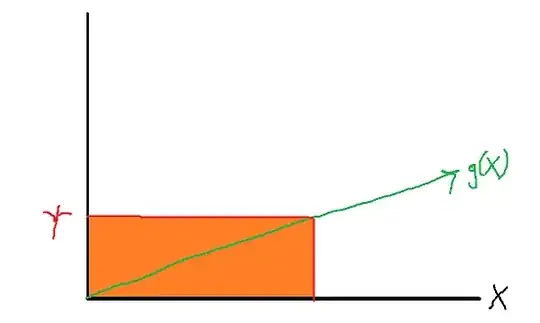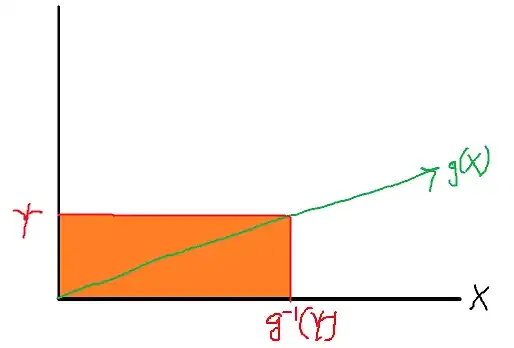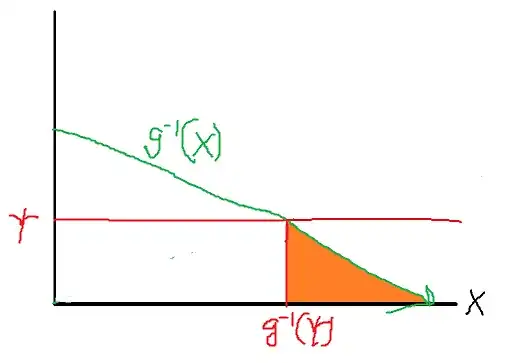(Sorry, I realized that you used $\Theta$ at the last minute. Simply replace $X$ with $\Theta$ in my answer below in the context of your question.)
Suppose $\Psi = g(X)$ is (strictly) monotonic with $g^{-1}$ differentiable. Note also that $X$ and $\Psi$ are assumed to be continuous random variables.
We find the density (PDF) of $\Psi$ by finding first the cumulative distribution function (CDF) of $\Phi$ and differentiating the CDF.
Observe
$$F_{\Psi}(\psi) = \mathbb{P}(\Psi \leq \psi) = \mathbb{P}(g(X) \leq \psi)\text{.}$$
Case 1. Suppose $g$ is strictly increasing. Then its inverse $g^{-1}$ is also increasing.
Consider the event $\{g(X) \leq \psi\}$.

The corresponding values of $X$ such that $g(X) \leq \psi$ are thus those where $X \leq g^{-1}(\psi)$.

Hence,
$$F_{\Psi}(\psi) = \mathbb{P}(g(X) \leq \psi) = \mathbb{P}(X \leq g^{-1}(\psi)) = F_{X}(g^{-1}(\psi))\text{.}$$
and differentiating (don't forget the chain rule), we obtain:
$$F_{\Psi}(\psi) = f_{X}(g^{-1}(\psi))\cdot \dfrac{\text{d}}{\text{d}\psi}g^{-1}(\psi)$$
Since $g^{-1}$ is strictly increasing, it follows that $\dfrac{\text{d}}{\text{d}\psi}g^{-1}(\psi) > 0$, so $\dfrac{\text{d}}{\text{d}\psi}g^{-1}(\psi) = \left|\dfrac{\text{d}}{\text{d}\psi}g^{-1}(\psi)\right|$.
Case 2. Suppose $g$ is strictly decreasing. Then its inverse $g^{-1}$ is also decreasing.
Consider the event $\{g(X) \leq \psi\}$.

As we can see above, the corresponding values of $X$ such that $g(X) \leq \psi$ are those where $X \geq g^{-1}(\psi)$. Hence,
$$F_{\Psi}(\psi) = \mathbb{P}(X \geq g^{-1}(\psi)) = 1 - F_{X}(g^{-1}(\psi))\text{.}$$
Differentiating and applying the chain rule, we obtain
$$f_{\Psi}(\psi) = -f_{X}(g^{-1}(\psi)) \cdot \dfrac{\text{d}}{\text{d}\psi}g^{-1}(\psi)$$
but notice that in this case, $g^{-1}$ is decreasing so $\dfrac{\text{d}}{\text{d}\psi}g^{-1}(\psi) < 0$. Notice the negative coefficient with $f_{\Psi}$. This would this turn $\dfrac{\text{d}}{\text{d}\psi}g^{-1}(\psi)$ into its positive form; hence, we have
$$f_{\Psi}(\psi) = f_{X}(g^{-1}(\psi)) \cdot \left|\dfrac{\text{d}}{\text{d}\psi}g^{-1}(\psi)\right|$$
In both cases ($g$ strictly increasing, $g$ strictly decreasing), the above equation is true.


